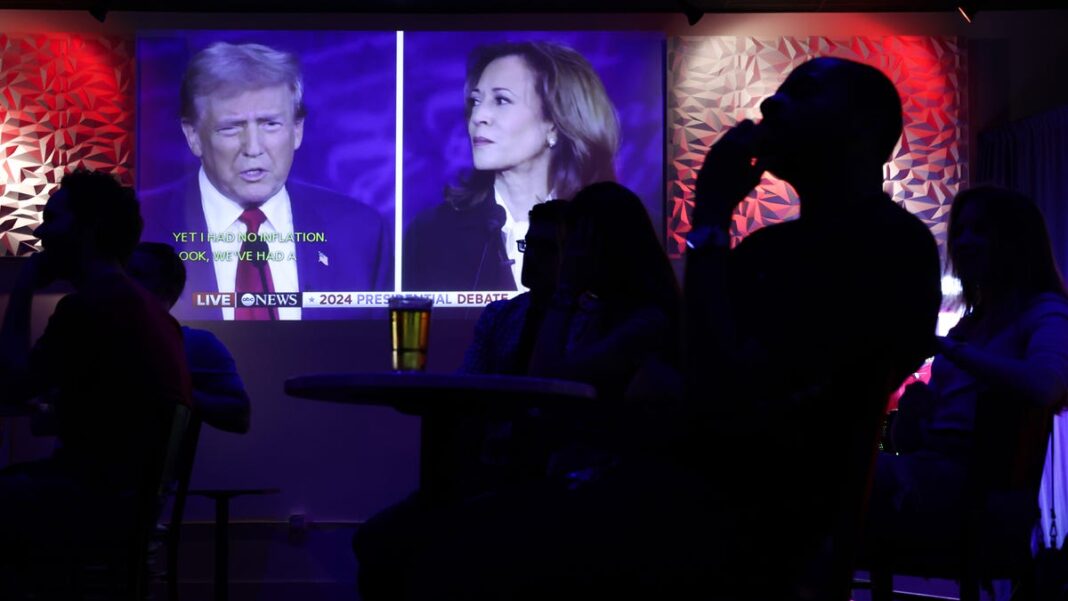Trump’s Current Poll Standing is Stronger Than His Previous Campaigns Against Clinton or Biden
WASHINGTON – Current polling indicates that Republican candidate Donald Trump is in a more favorable position now compared to this time in both 2020 and during his successful campaign in 2016, despite ongoing skepticism about poll accuracy.
While Trump does sit behind Democratic candidate Kamala Harris in many polls, it is crucial to note that the gaps are smaller than those he encountered during his past elections, where he often outperformed poll predictions at the ballot box.
Republicans are hopeful about what some analysts refer to as the “hidden Trump vote,” although there is uncertainty about whether this group still exists. At a recent rally in Reading, Pennsylvania, Trump asserted that a poll showed him leading by three percentage points in Pennsylvania, suggesting it could actually be a 10-point advantage.
The Trump campaign, having lost the 2016 popular vote to Hillary Clinton by slightly over 2 percentage points but winning the Electoral College, operates on the belief that tighter national polls in 2024 could enhance his chances for electoral success.
However, pollsters are cautious about this assumption.
This election cycle, pollsters have revised their methods, aiming to capture the sentiments of “hidden” Trump supporters—those who intend to vote for him but keep it private, as well as others who are difficult to reach through standard polling techniques such as telephone surveys. Additionally, various voter demographics exhibit increased engagement owing to new concerns, ranging from abortion rights to inflation.
“Certain fundamentals remain uncertain until Election Day,” stated pollster Frank Luntz.
Moreover, individual state polls hold greater significance than national ones, with many showing tight races as well. In seven crucial battleground states—Pennsylvania, Michigan, Wisconsin, Georgia, Arizona, Nevada, and North Carolina—most polls are within a small margin of error.
“The only definite observation is that these swing states are extremely close,” noted Republican pollster Whit Ayres. “They are practically tied.”
As of Friday, the average of recent national polls compiled by Real Clear Politics indicates Harris leading Trump by 1.8%.
Four years earlier, Democratic nominee Joe Biden led Trump by a substantial 10.3 percentage points at this point in the 2020 race, ultimately winning both the popular and electoral votes, albeit by narrower margins. In 2016, Hillary Clinton had a 6% lead over Trump in the RCP national average.
The elections in those years were much tighter than they appear now.
In 2016, Clinton received 48.2% of the popular vote compared to Trump’s 46.1%, with the remainder going to third-party candidates, including Libertarian Gary Johnson and Green Party’s Jill Stein. Nonetheless, Trump secured the Electoral College with a 304 to 227 margin (along with seven “faithless electors” who voted for others).
In contrast, Biden four years later won the popular vote against Trump with a larger margin, taking 51.3% to Trump’s 46.9%, and secured the Electoral College with a 306 to 232 tally.
Simon Rosenberg, a Democratic strategist focused on data analysis, mentioned that pollsters have updated previous methodological errors. He pointed out that Republican candidates in the 2022 midterm elections did not meet polling expectations, and Trump himself underperformed in the recent Republican presidential primaries.
Rosenberg also highlighted that Harris and the Democrats may possess their own “hidden vote” in this election.
“The race is incredibly close,” Rosenberg stated. “Everything lies within the margin of error. However, with significant financial and organizational advantages, we remain more likely to succeed.”
Ultimately, it remains uncertain whether this election will resemble the outcomes of 2016, 2020, or present an entirely different scenario.
“I believe we are somewhere in the middle,” Luntz remarked. “That’s why it’s too close to determine a clear winner.”

